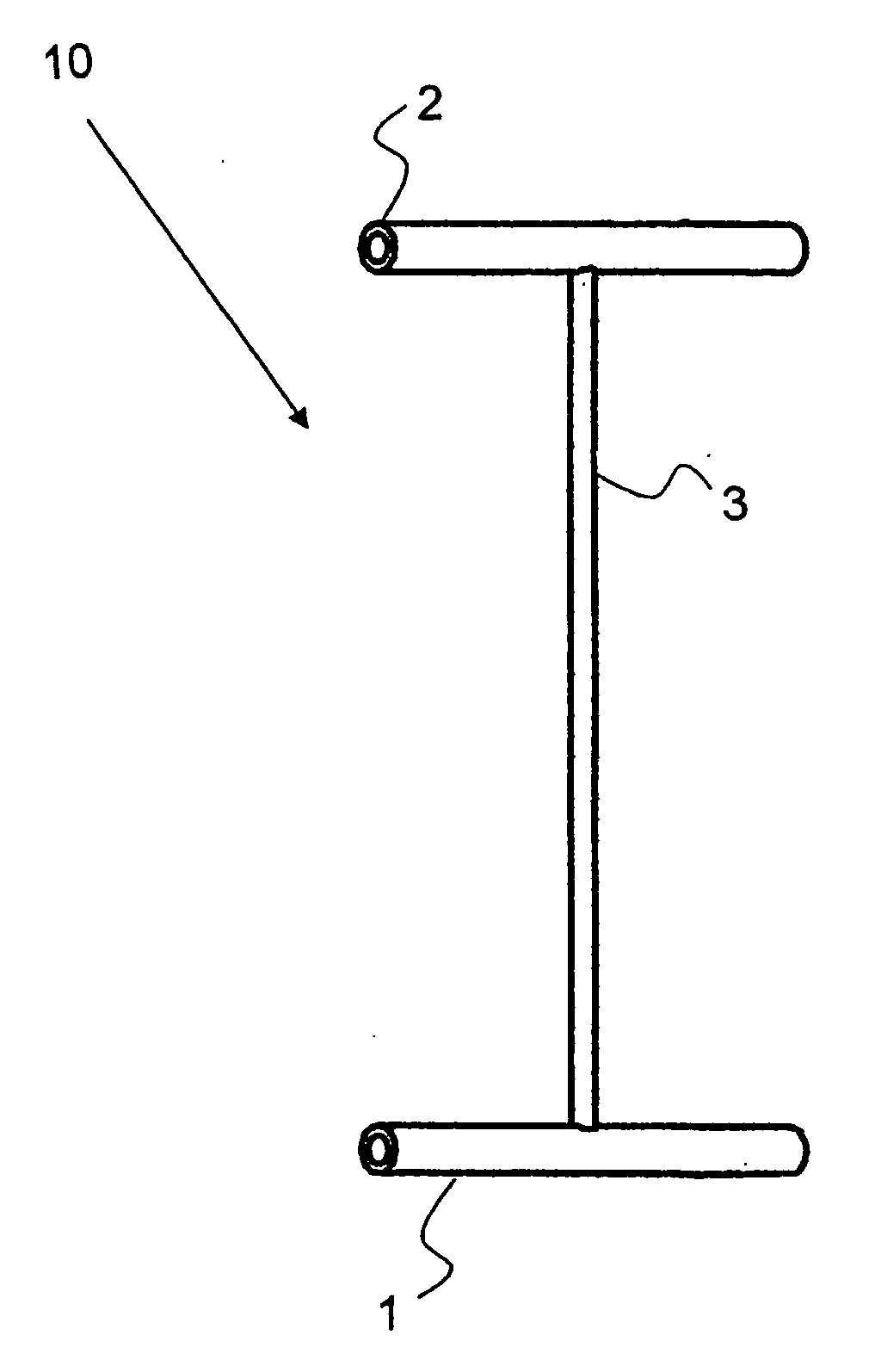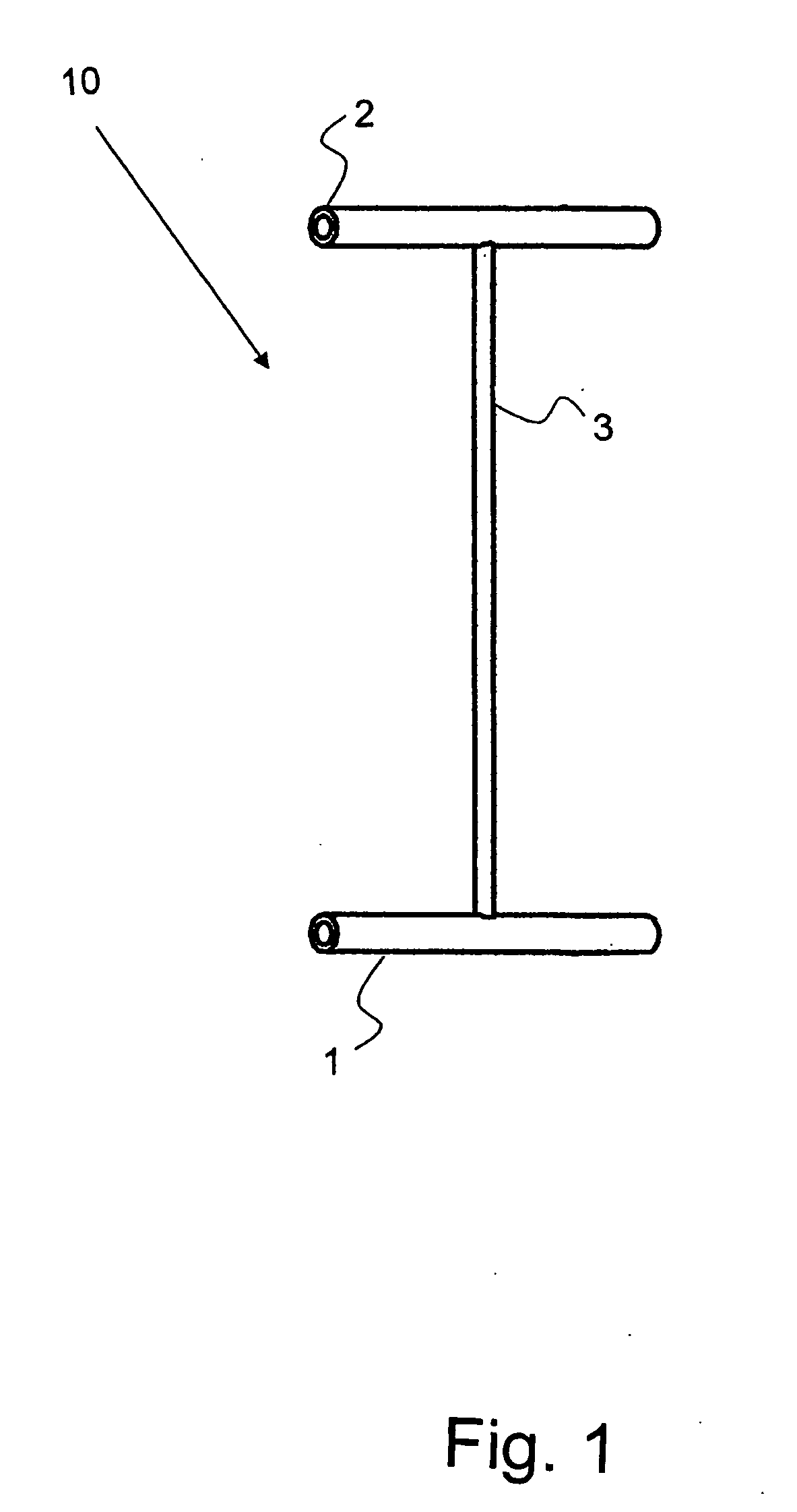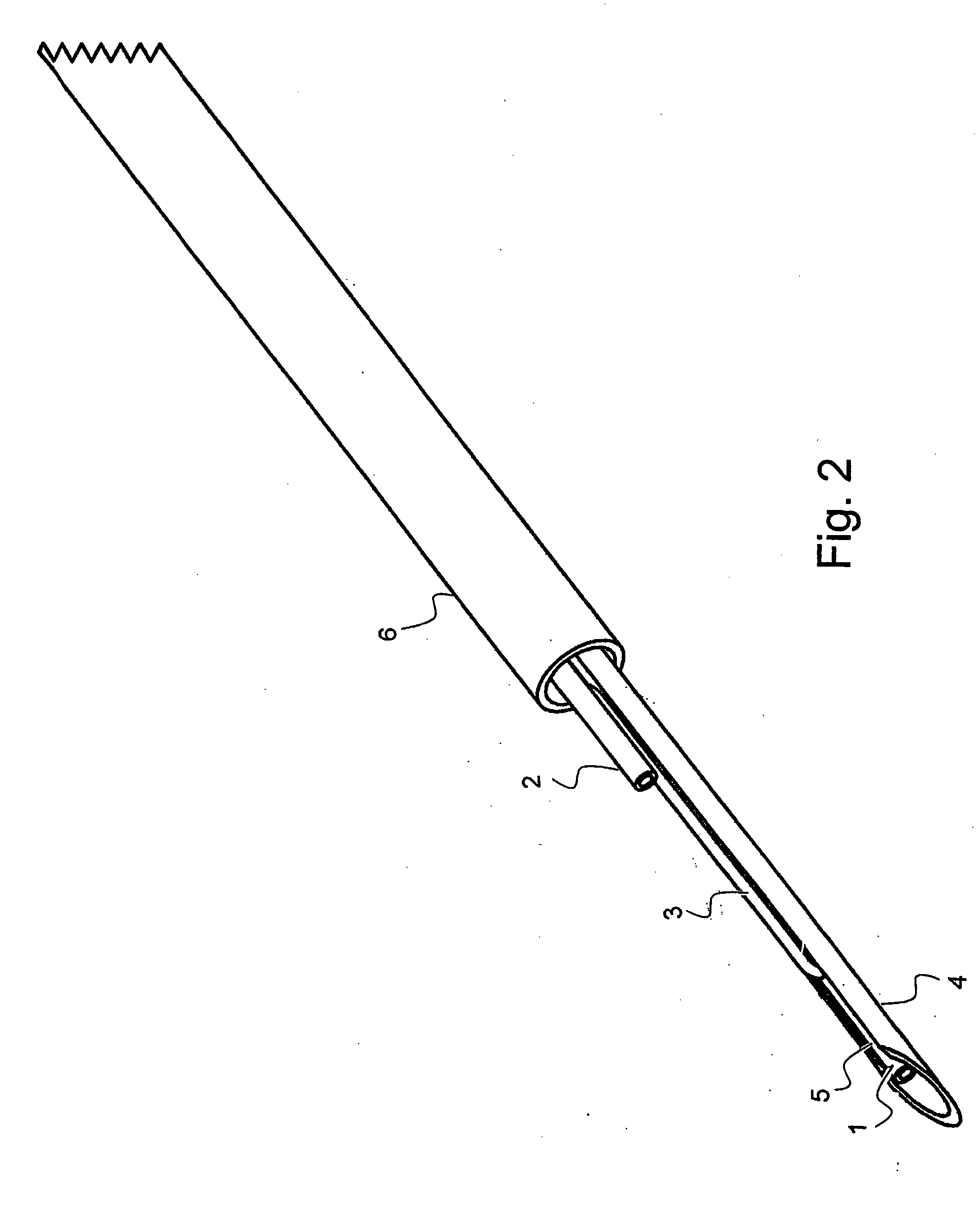Article, system, and method for securing medical device to tissue or organ
a technology for securing medical devices and organs, applied in the field of medicine, can solve the problems of insufficient in certain cases, inability to describe the use of securing medical devices, and inability to achieve the effect of precise placement and stapling, and good elasticity
- Summary
- Abstract
- Description
- Claims
- Application Information
AI Technical Summary
Benefits of technology
Problems solved by technology
Method used
Image
Examples
Embodiment Construction
[0025] Referring first to FIG. 1, an example of a tilt-tag staple 10 of the invention is shown wherein a first tilt tag 1 and a second tilt tag 2 are joined perpendicularly at respective ends of joining member 3. In the illustrated embodiment, the tilt-tag staple 10 is molded in one piece from Nitinol, a commercially available nickel-titanium alloy.
[0026] Referring now to FIG. 2, the first tilt tag 1 is inserted in a needle 4 having a slit 5 which is slightly wider than the diameter of the joining member 3 but is less wide than the diameter of the first tilt tag 1 so as to allow the first tilt tag 1 to slide in the channel of the needle 4 and for the joining member 3 to bend in a direction parallel or very close to parallel with the first tilt tag 1. The second tilt tag 2 is bent substantially parallel to the joining member 3 but is outside of the hollow needle channel. The positions of the second tilt tag 2 and the joining member 3 are maintained by the flexible tube 6, and the ne...
PUM
 Login to View More
Login to View More Abstract
Description
Claims
Application Information
 Login to View More
Login to View More - R&D
- Intellectual Property
- Life Sciences
- Materials
- Tech Scout
- Unparalleled Data Quality
- Higher Quality Content
- 60% Fewer Hallucinations
Browse by: Latest US Patents, China's latest patents, Technical Efficacy Thesaurus, Application Domain, Technology Topic, Popular Technical Reports.
© 2025 PatSnap. All rights reserved.Legal|Privacy policy|Modern Slavery Act Transparency Statement|Sitemap|About US| Contact US: help@patsnap.com



